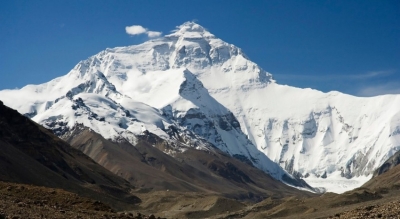
If we asked you what are the polar regions of Earth. You would instantly say North Pole and South Pole. But did you know there is a region North of India that glaciologists call the Third Pole?
The Tibetan plateau, home to the vast Hindu Kush-Himalaya ice sheet, is referred to as the Third Pole, because it contains the third largest amount of snow and ice after the Arctic and the Antarctic. It covers an area of about 1,00,000 sq km and has some 46,000 glaciers.
The Third Pole spans eight countries – from Afghanistan to Myanmar. The frozen glaciers are the source of 10 major rivers, including the Ganges, Brahmaputra, Yellow, Mekong and the Indus. They support at least 1.6 billion people directly in India, Nepal, Bangladesh, China, Pakistan and Afghanistan. (That’s nearly one fifth of the world’s population.) These rivers are the main source of water for drinking, agriculture and hydropower. The rivers indirectly support the livelihoods of millions of people in these countries.
The bad news
The sad news is that the Third Pole is melting quickly. Researchers suggest that it could lose more than a third of its volume by the end of the century, even if the internationally agreed target of limiting global warming by 1.5 degrees C above pre-industrial levels is adhered to. And if greenhouse gas emissions continue at their current levels, the region could lose as much as two-thirds of its ice. Research has also found that more than 500 small glaciers have disappeared altogether and the biggest ones are shrinking rapidly.
The continuous glacier melting will be catastrophic for the people who depend on its water. While initially more water is expected to pour into river basins, causing flooding, eventually that will dry up, resulting in drought and desertification.
Reasons for melting
The melting is due to global warming. Because it is high above sea level, the Third Pole is also sensitive to changes in temperatures. Its high elevation means it absorbs energy from rising, warm, moisture-laden air quickly.
Dust and pollution are the second main reasons. Black carbon or soot from car exhausts and coal burners is settling on the ice, causing it to absorb the rays of the Sun, rather than reflect them away.
Picture Credit : Google

